by Brian Hioe
語言:
English
Photo Credit: Brian Hioe
A “Second Sunflower Movement”?
YESTERDAY AFTERNOON, demonstrators gathered at a site near the Ministry of Education for an afternoon of speeches, before marching at just before 6 PM to the Ministry of Education to throw paper airplanes into the Ministry of Education courtyard. The paper airplanes were made from folded up letters written by students expressing their dissatisfaction with planned textbook revisions. The Liberty Times claims four hundred in attendance.
That Taiwanese students have risen up in regards to planned textbook changes by the Ministry of Education has been well noted. These changes have been referred to as a “black box” in line with the CSSTA trade agreement that the Ma administration attempted to push through legislature last year, as well as a “second Sunflower Movement.” Some debate ensued as to whether such terms are in fact an overstatement of the situation. Part of the attempt to bill protests over textbook changes as a “second Sunflower Movement” was also meant to suggest that the protest was a movement of high schoolers in contrast to the original Sunflower Movement which was largely led by college students.
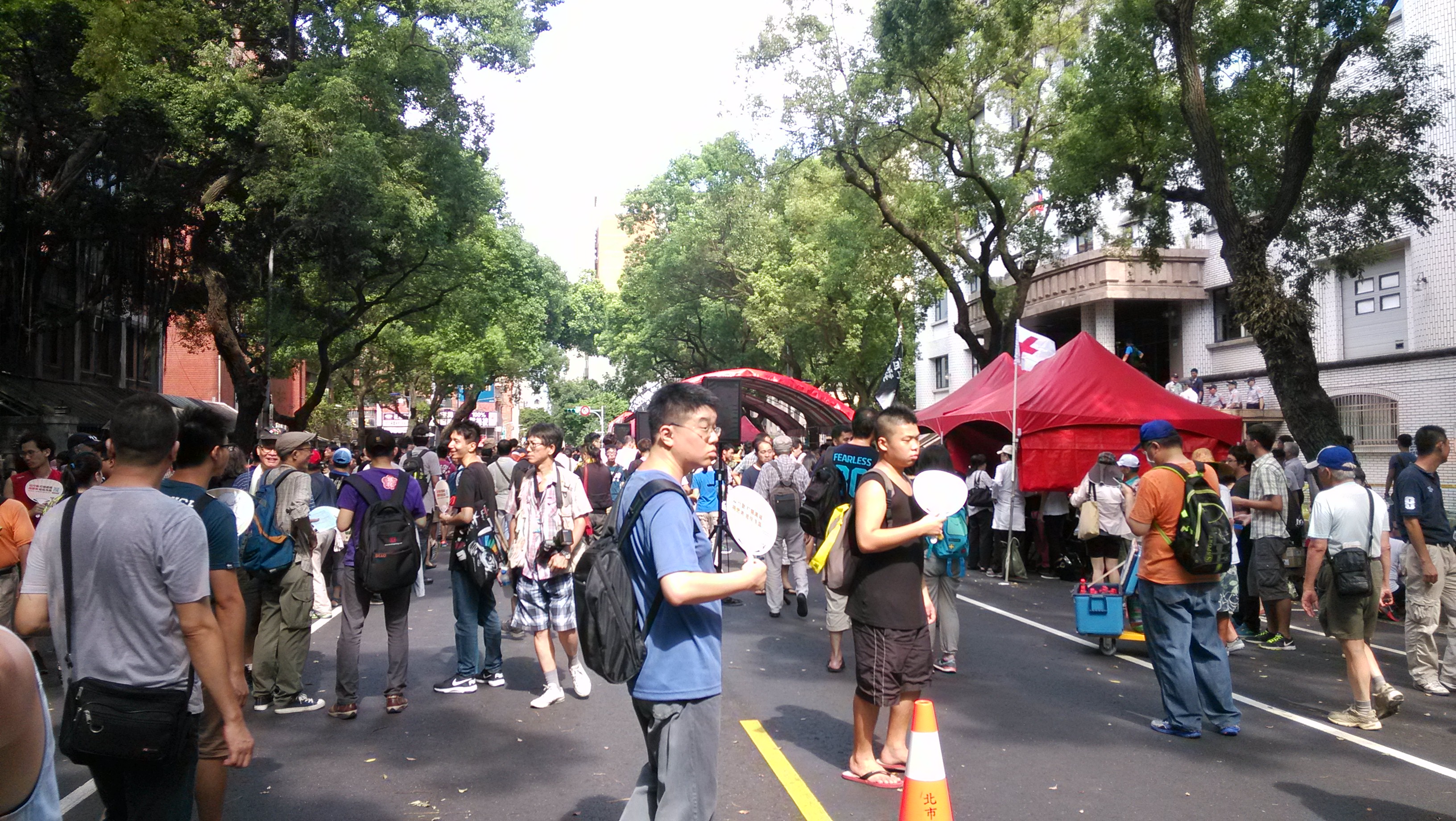 Photo credit: Brian Hioe
Photo credit: Brian Hioe
Protest began at National Taichung First Senior High School but have since expanded to schools in other urban centers. Much of protest activity in Taipei originates from Taipei Municipal Jianguo High School, which is Taiwan’s most prestigious high school, and is hence significant where it stands for the educational values of the nation writ large. Demonstrators against planned textbook changes include not only high school students and college students, but also high school teachers and professors. Organizers of demonstrations against textbook changes include student groups active in the Sunflower Movement as the Black Island Youth Front and others, these groups largely consisting of college students. With the generational gap, however, there are reports of some conflict between college student organizers and high school student organizers regarding the relative lack of experience of high school student organizers.
Indeed, yesterday’s demonstration featured a strong high schooler presence, as well as the usual college activists who were active in the Sunflower Movement. Established groups as the Free Taiwan Party and Green Party had contingents on site. Individual members of the New Power Party and Social Democratic Party candidate Miao Poya were also present, the latter receiving much fanfare from the crowd. Apart from a brief moment of confusion of how to launch the paper planes into the Ministry of Education courtyard without striking the members of the police stationed within or the members of the media hoping to capture the event on film, yesterday’s protest was largely a success.
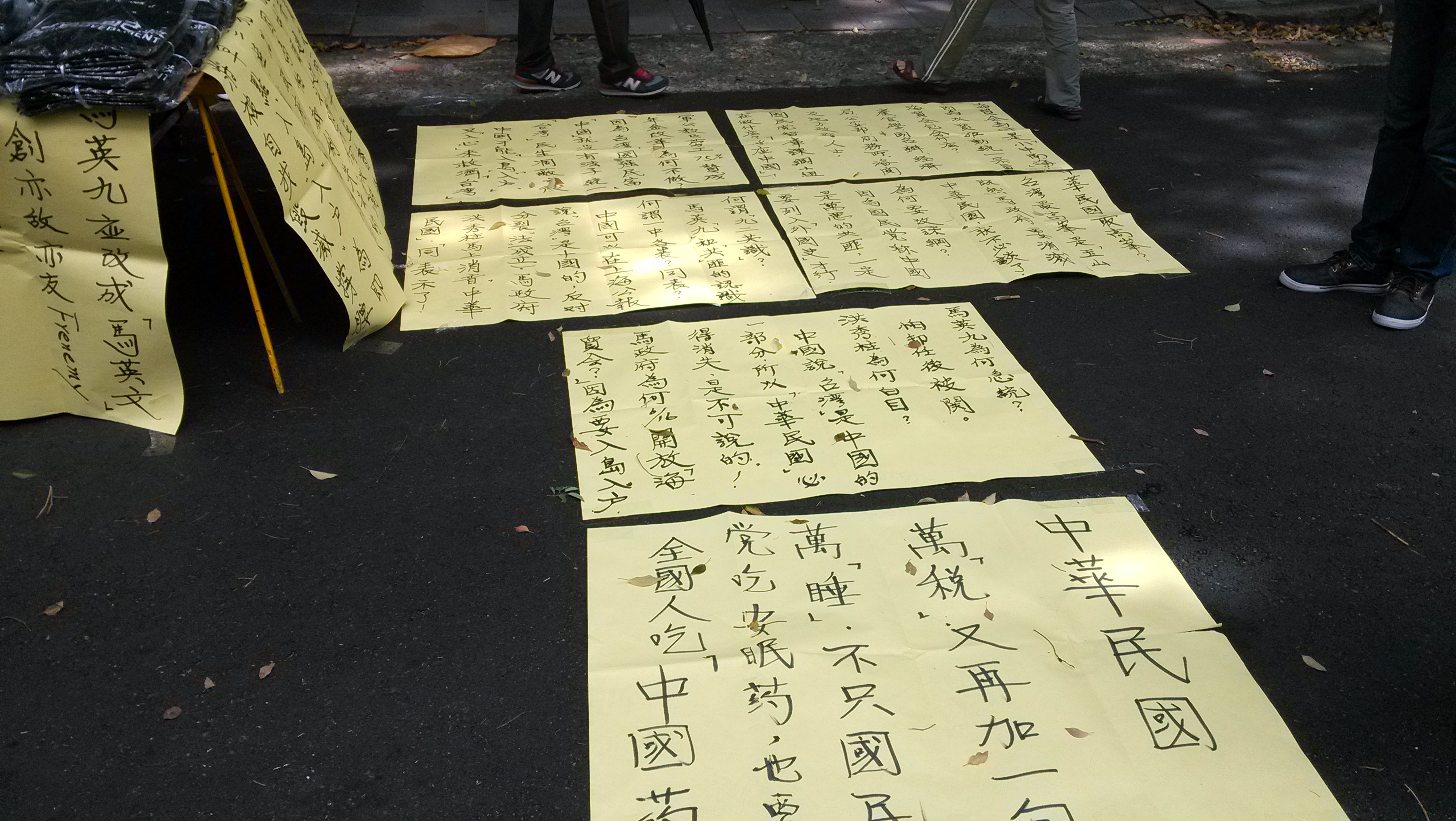 Photo credit: Brian Hioe
Photo credit: Brian Hioe
But was this truly a second Sunflower Movement? Actually, it seems the government was preparing for that possibility, with the deployment of razor-sharp barriers and the installation of a new iron gate outside of the Ministry of Education in preparation for the protest. Yet from the beginning, the crowd was never so large to be able to compare to the crowds of last year, and even before the beginning of the march to the Ministry of Education, the crowd had already begun to thin in the afternoon heat. The possibility of dramatic action was ruled out from the beginning, with demonstration organizers emphasizing throughout that the protest had to be a peaceful one and could not grow out of control. This was despite that some had declared the original intent of the protest would be to surround and possibly occupy the Ministry of Education. Regardless, nothing so dramatic would happen yesterday.
Contested History
WHAT DEMONSTRATORS have panned are textbooks with a pro-China bias, aimed at depicting Taiwanese history according to the lines set out by the officially, KMT-mandated history. The controversy is hardly new. Past turnover of political administrations between KMT to DPP then back again led to changes in high school textbooks during the Chen administration which served to “Taiwanize” the history described within, revising the KMT official history which had claimed for decades that Taiwan was inextricably part of China. With the decline of the DPP after the unpopularity and controversy of the Chen Shui-Bian presidency, the KMT’s return to power allowed it to undo such changes.
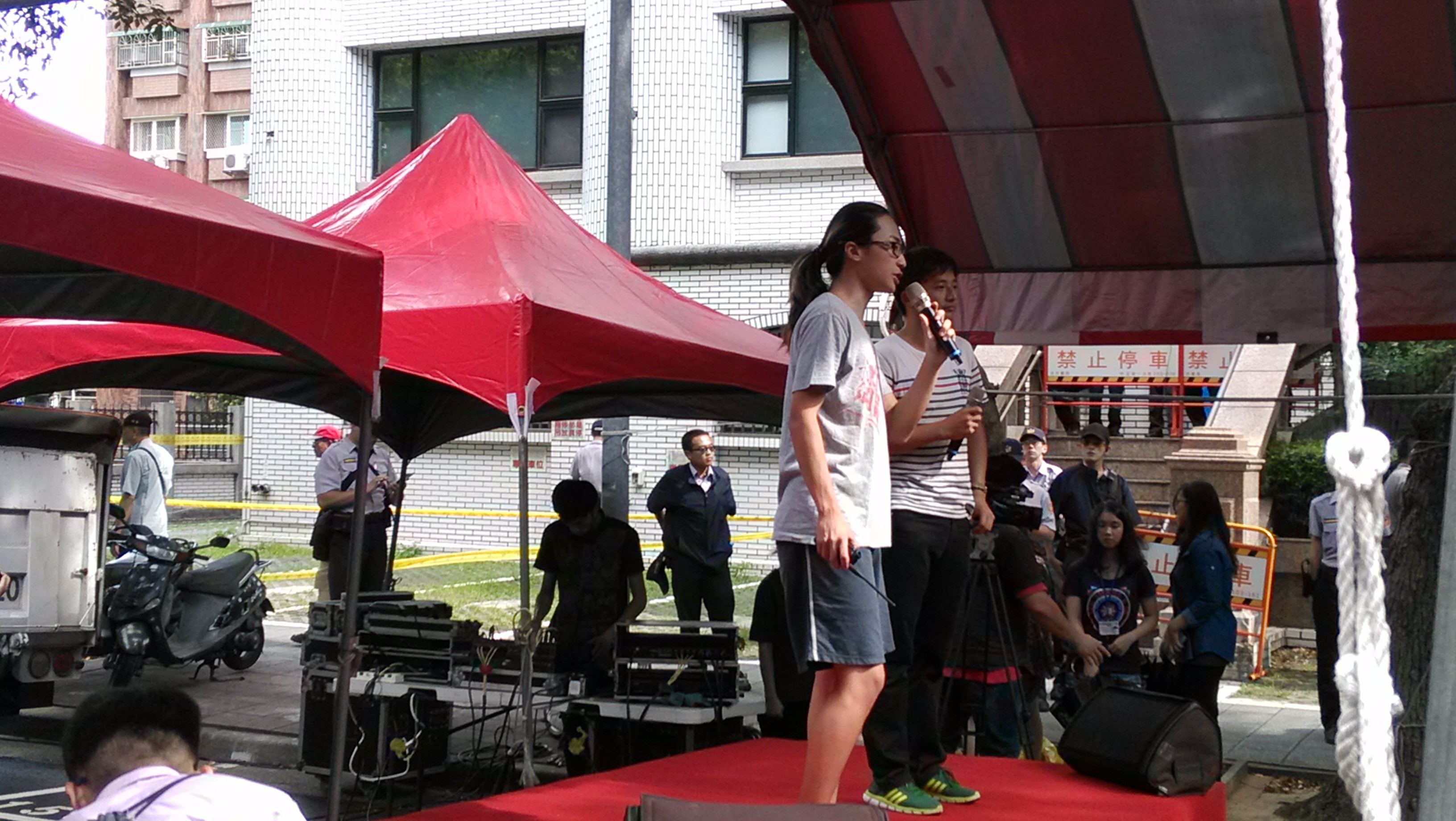 Photo credit: Brian Hioe
Photo credit: Brian Hioe
Those textbook changes included removal of reference to China as part of the Republic of China, the removal of references to Chiang Kai-Shek in a positive light, and the removal descriptions of Taiwan’s geographic borders in such a fashion that mainland Chinese geographic features were described as being part of China. Current controversy involves deletions of references to Taiwan’s democracy movement, as well as the restoration of text in which Chinese geographic features are referred to as Taiwan.
Where contestation in recent years about textbooks comes out of the long history of KMT authoritarian rule in which it sought to depict Taiwan as a province of China, for decades Taiwanese were not taught Taiwanese history, and school textbooks typically devoted nothing but a few chapters to Taiwanese history. By contrast, as a means of instilling a sense of Chinese identity into Taiwanese and in order to maintain claims that Taiwan was China, Taiwanese were largely taught Chinese history instead. More broadly, this was part of a program of patriotic education seeking to instill the civic values of the KMT’s brand of mainland-oriented nationalism into Taiwanese youth. It was only after democratization that textbooks with a Taiwan-oriented history were introduced.
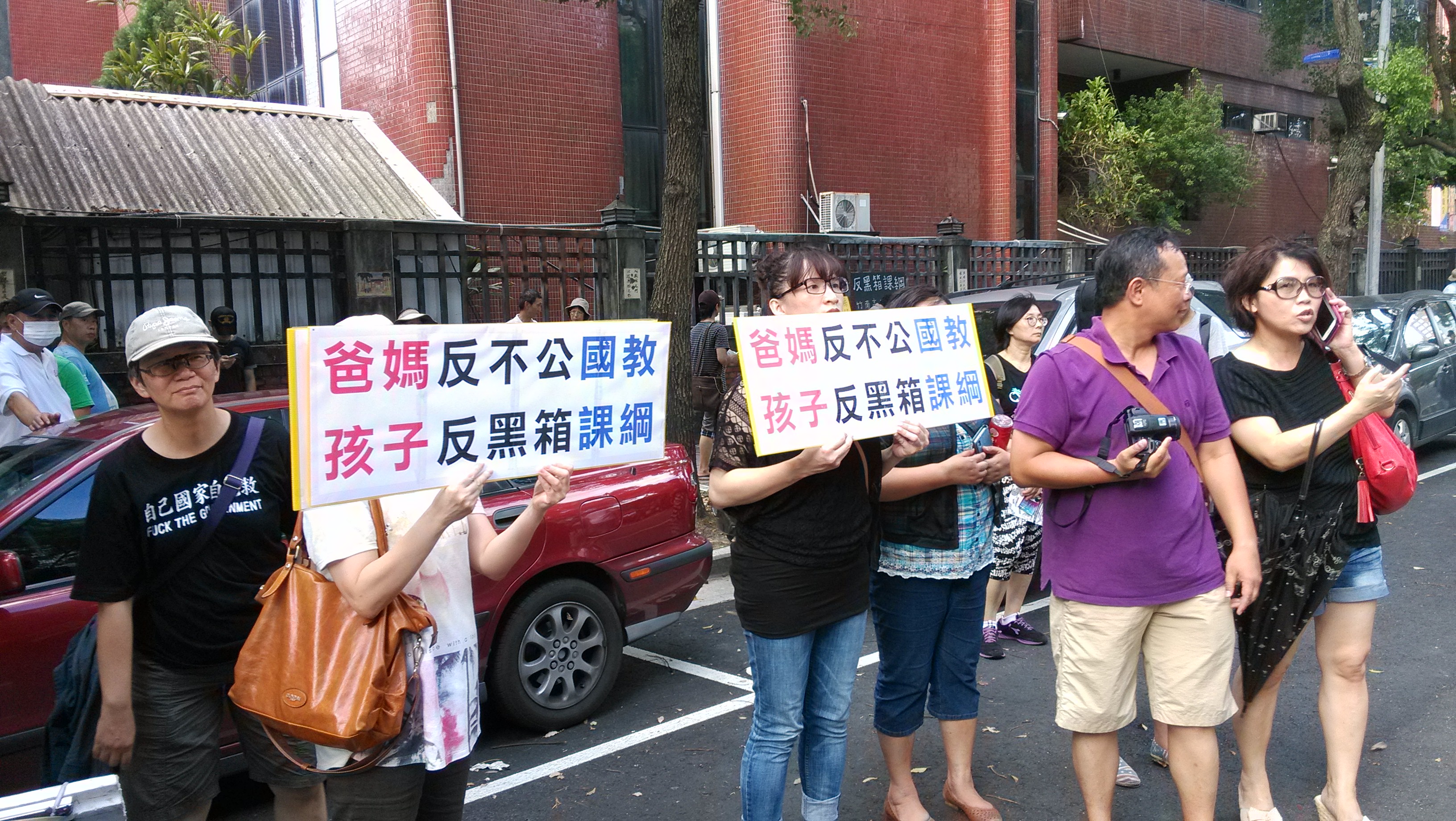 Photo credit: Brian Hioe
Photo credit: Brian Hioe
It is not surprising, then, that there would be controversy over the planned textbook revisions which revert back to a China-oriented history. However, we might also note the existence of a minority position which opposes the undemocratic process by which textbooks were foisted upon students, but not the textbooks themselves. With the CSSTA last year and the “black box” issue of the undemocratic process by which it was passed in the Legislative Yuan, there were those were opposed to the undemocratic process of forcing the CSSTA through but not the CSSTA itself. This is also the case regarding the textbook revision controversy. Along such lines, the sentiment of speakers at the demonstration yesterday was largely bipartisan, with attempts to avoid explicit discussion of blue-green political divisions or issues of Taiwanese independence or unification.
The Issue of Textbook Revisions Worldwide
CONTROVERSY OVER textbook revisions is, of course, hardly particular to Taiwan. If we are to begin with America, quite particularly, some comparisons between textbook revision controversies in America have been ventured on by American academics. Textbook revision controversies in America in recent years have probably most prominently centered on grounds of religion versus science, with Christian religious fundamentalists of a conservative bent attempting to replace references to evolution in science textbooks with a creationist view of the universe. Concerning history textbooks, however, controversy has mostly centered on the American history of race relations, for example, with conservative groups calling for the removal of textbook content about the slave trade claiming inclusion to be unpatriotic, or offering a revisionist view of the Civil War.
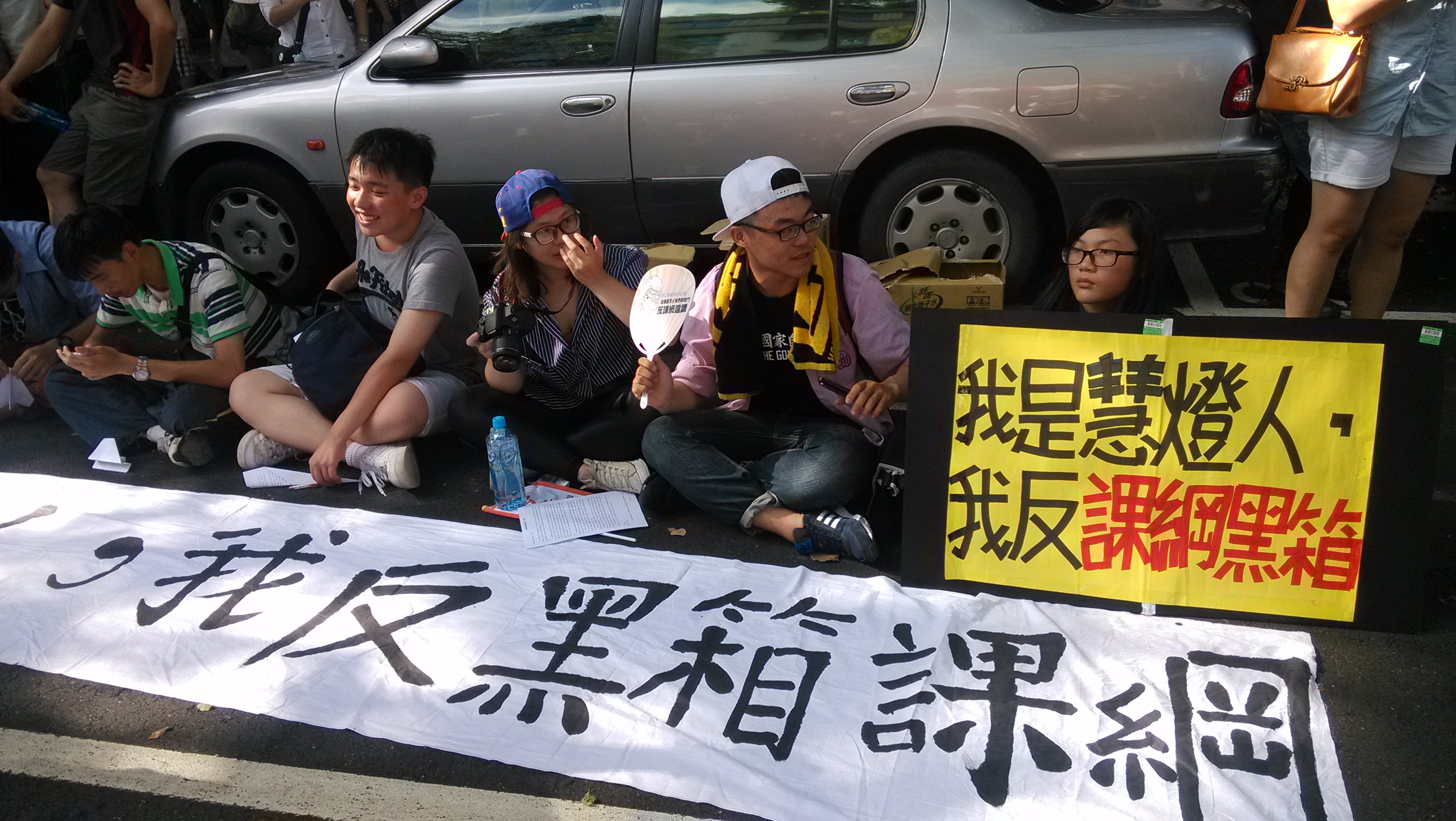 Photo credit: Brian Hioe
Photo credit: Brian Hioe
Where we examine textbook controversies in other parts of the world, we often find that textbook controversy divides along lines of the Left and Right of the political spectrum. These controversies center on historical crimes committed by the nation which remains charged in the present. In Japan, for example, we find controversy about war crimes committed by the Japanese army during the period of the Japanese empire, specifically the enslavement and rape of comfort women and the denial that these acts happened by conservative and far-right groups. By contrast, in Germany, we find less controversy over the Holocaust, where far-right Holocaust deniers and neo-Nazis have gained little ground in attempting rewrite history textbooks in order to erase the history of the Holocaust. As South Korea has a similar history of martial law and authoritarianism to Taiwan, South Korean textbook revision on the part of conservatives has also seen attempts to whitewash the history of authoritarian rule as part of a form of patriotic education. There are, of course, other examples.
We can find some similarity between Taiwan and other nations where, in part, the history under scrutiny is the period of KMT authoritarian rule, inclusive of the White Terror and Martial Law period. Conservative forces would attempt broadly to whitewash past history and crimes not only to defend their own interests, given that they they themselves may have had a part in the history of authoritarianism. Taiwan’s problems of transitional justice are yet to be resolved where the KMT remains in existence and many of the KMT officials who were responsible for the crimes of the authoritarian period remain to be brought to justice—sometimes continuing to serve in official party positions or as part of the current Taiwanese government.
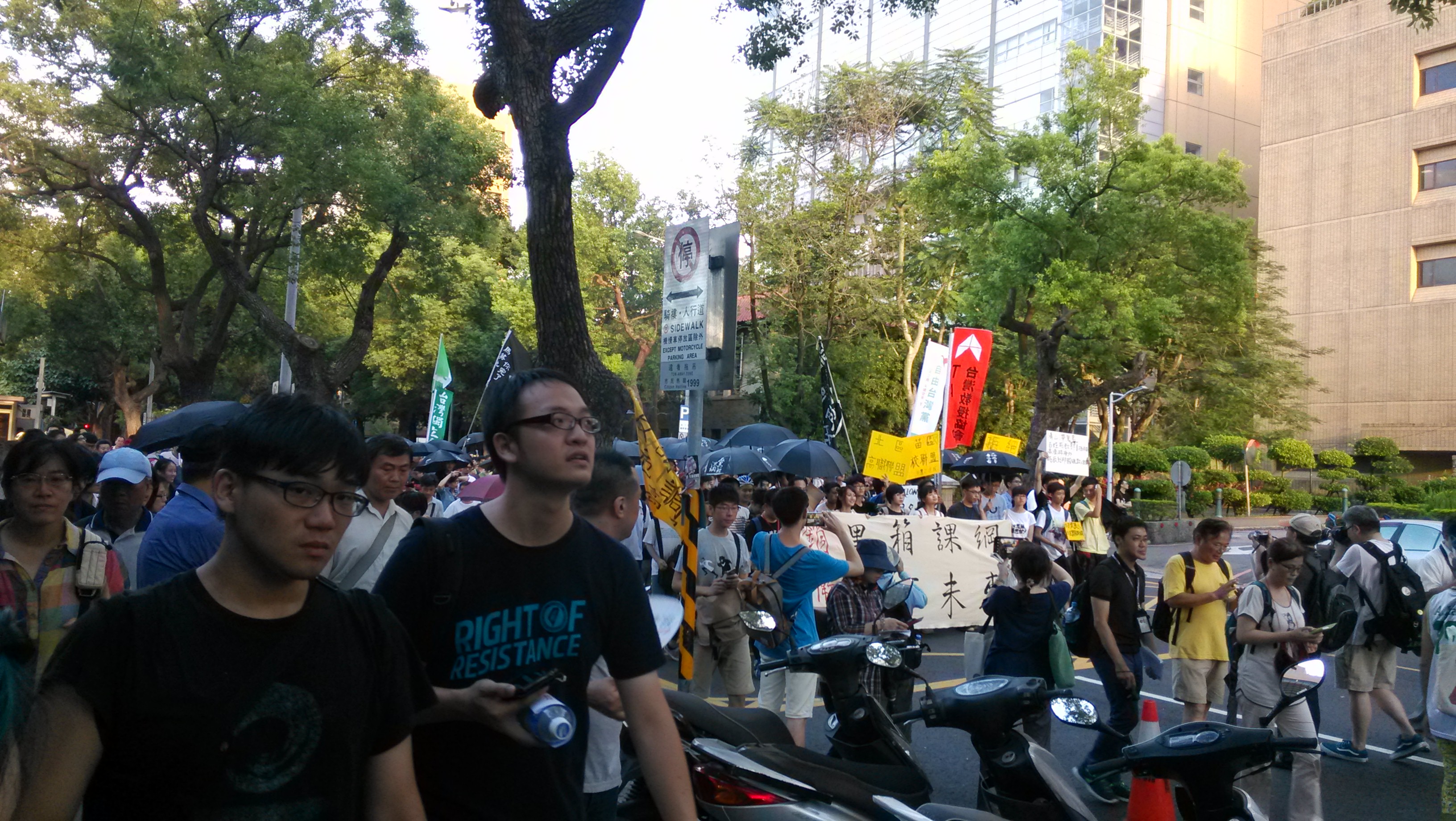 Photo credit: Brian Hioe
Photo credit: Brian Hioe
This is true elsewhere outside of Taiwan as well. More generally, textbook revisions as in Taiwan or elsewhere that aim at such whitewashing of history use patriotism as a justification, where having to confront the moral ambiguities of the nation’s past is billed as unpatriotic.
A Struggle Over National Identity and History?
STILL OTHERS, however, have made comparisons to the controversy about China’s attempt to instill a “patriotic education” in Hong Kong through textbook revisions. This would seem to be a particular aspect of the textbook revision controversy shared between Taiwan and Hong Kong, where textbook revisions involve a struggle over national identity and history in relation to China.
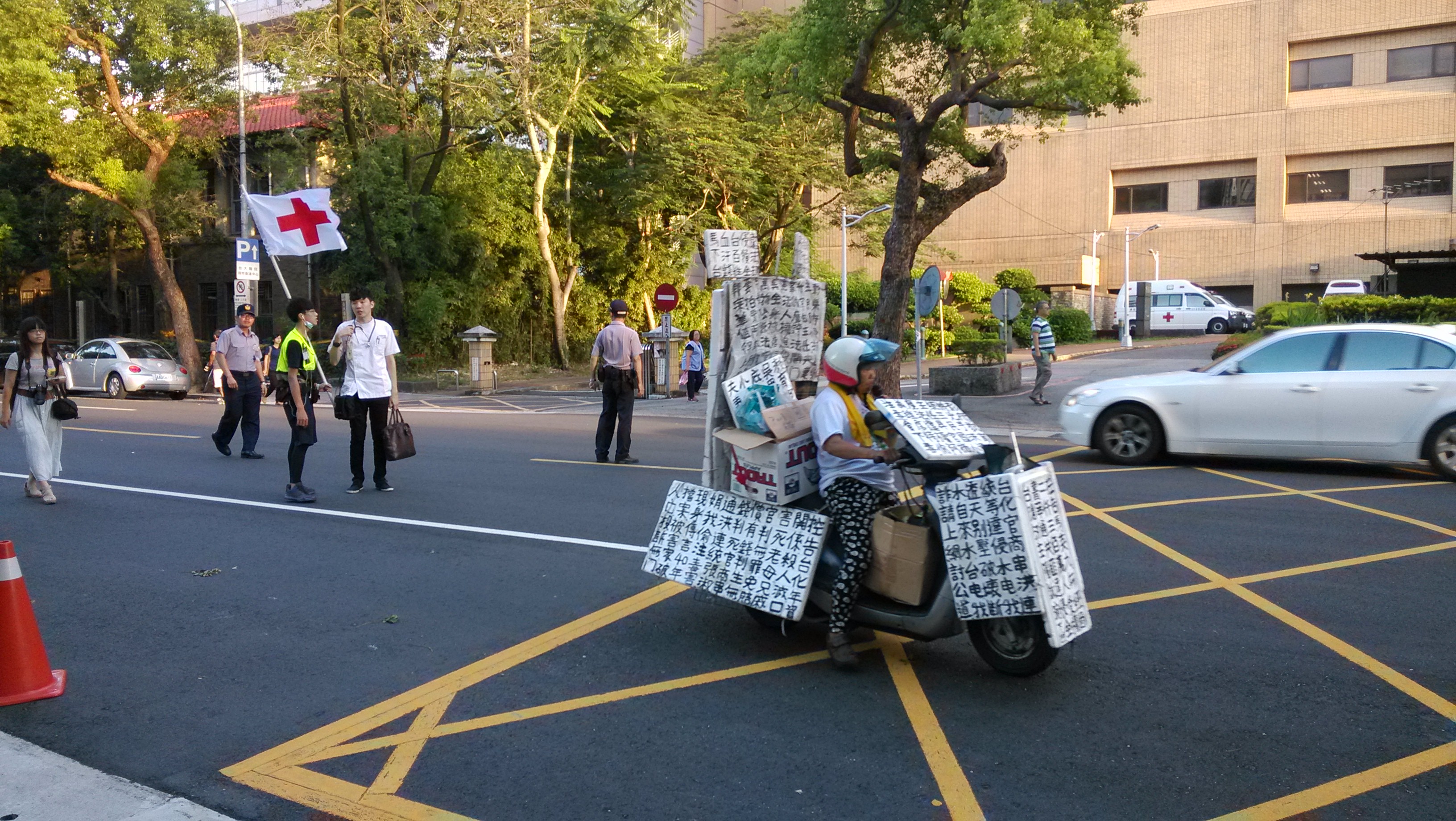 Photo credit: Brian Hioe
Photo credit: Brian Hioe
Namely, in Taiwan and Hong Kong, the issue of textbook revisions becomes an arena for contesting identity regarding whether one is or is not Chinese. But in Hong Kong, textbook revisions were pushed for by the CCP, who now have territorial sovereignty over Hong Kong after the British handover in 1997, as part of attempts to erode the independent sense of identity of Hong Kong’s young and instill a sense of identification with China. This is a logical step to consolidating control over Hong Kong where the CCP is concerned.
On the other hand, in Taiwan, we see the rather unique collective delusion on the part of the KMT where the KMT attempts to instill a sense of identification with the phantom entity of the “Republic of China” which ceased to exist in 1949. The KMT attempts to convince Taiwan’s young through textbook revisions that they are citizens of a country which is not the country they geographically live in, that is, China, but also that they are citizens of a version of China which ceased to exist seventy years ago.
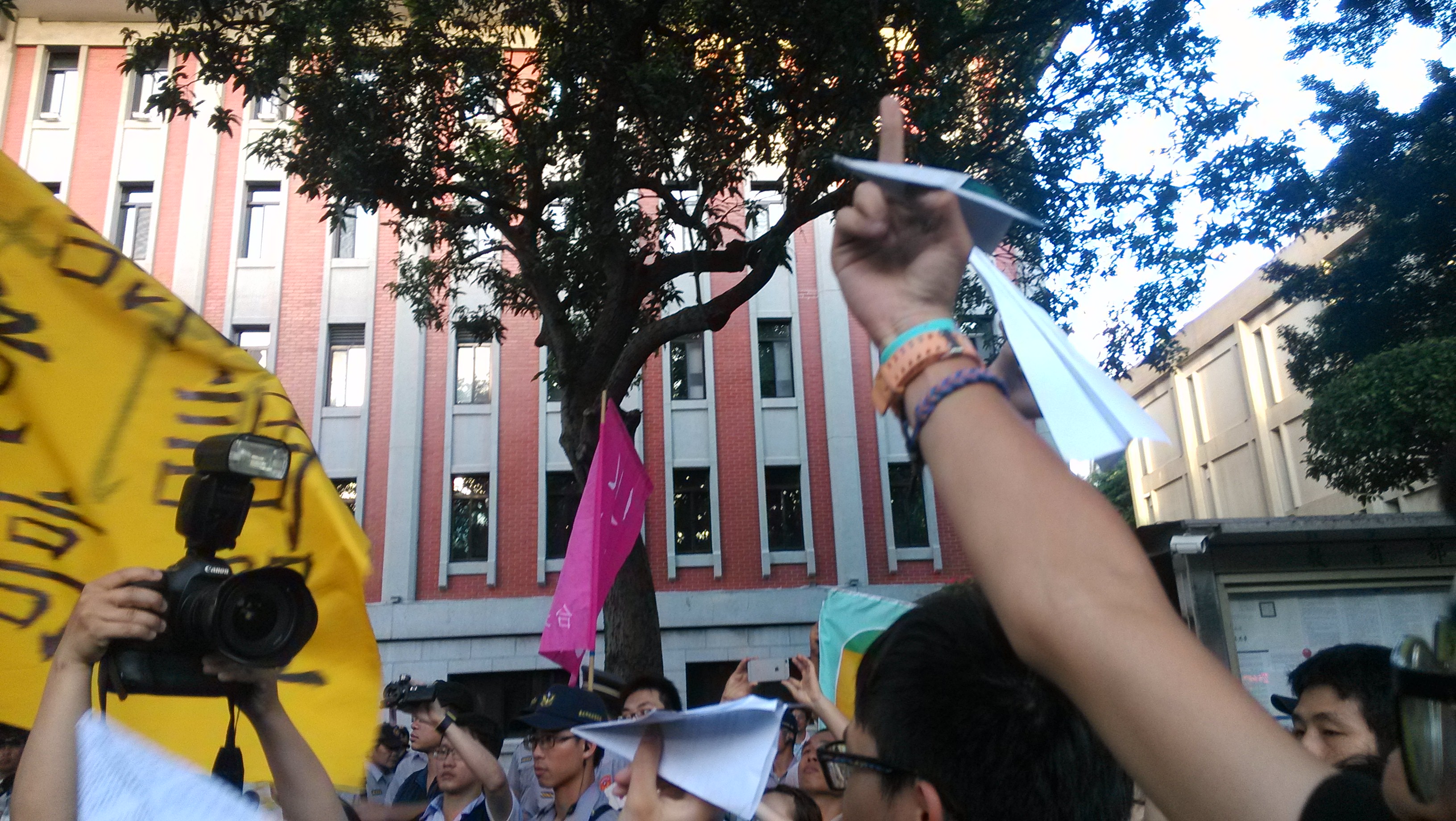 Photo credit: Brian Hioe
Photo credit: Brian Hioe
In Hong Kong, textbook revisions was opposed by Joshua Wong’s Scholarism group. Joshua Wong and Scholarism would also be critical factors behind the explosion of the Umbrella Movement. Though originally consisting of only secondary school students, Scholarism would acquire a reputation as an activist group opposed to China’s attempts to encroach upon Hong Kong’s democracy. It would be Wong who lit the spark that ignited the Umbrella Movement through an attempt to occupy Civic Square in Hong Kong during a period in which a student strike had been declared, his subsequent arrest being galvanizing of the Hong Kong public.
So, then, it would appear that Hong Kong’s Umbrella Movement began with the issue of textbook revisions and one whose beginning was sparked by high schoolers. It was on this basis that, in part, there were calls to make the issue of textbook revisions into a “second Sunflower Movement”—again, that this would be a Sunflower Movement sparked by high schoolers rather than the predominantly college student dominated Sunflower Movement of 2014.
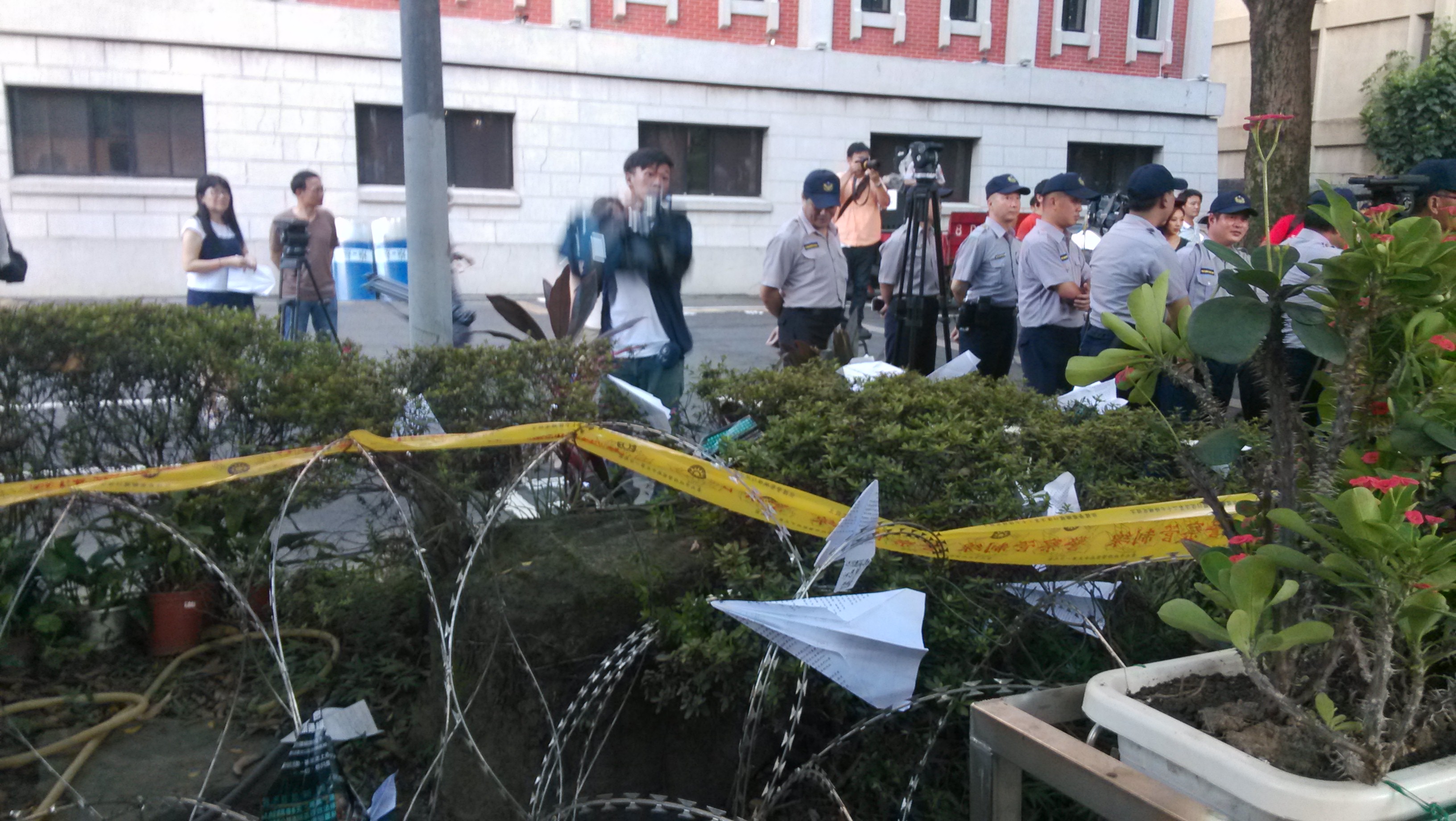 Photo credit: Brian Hioe
Photo credit: Brian Hioe
Though based on yesterday’s turnout, it seems unlikely that such an explosion of protest about the textbook reform issue will happen in the near future, resistance on the part of Taiwanese high school students is a case of students contesting the official history of the KMT—a case in which students decide for themselves that the history they identify as being their history is not that which is claimed to be truth by the KMT. As with last year in March, we see that Taiwan’s young are far from an apathetic “Strawberry Generation.” Taiwan’s young have taken Taiwanese history—and their vision of what Taiwan’s future should be—into their own hands. But will it be the case that action so dramatic on the scale of last year’s Sunflower Movement is possible? That is up to the young to decide.






 Photo credit: Brian Hioe
Photo credit: Brian Hioe


